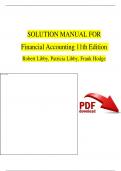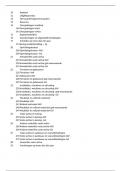Tentamen (uitwerkingen)
Solution Manual for Financial Accounting 11th Edition Robert Libby, Patricia Libby, Frank Hodge |Complete Chapter 1 - 13| 100 % Verified
- Vak
- Instelling
- Boek
Solution Manual for Financial Accounting 11th Edition Robert Libby, Patricia Libby, Frank Hodge |Complete Chapter 1 - 13| 100 % Verified Solution Manual for Financial Accounting 11th Edition Robert Libby, Patricia Libby, Frank Hodge| Verified Chapter's 1 - 13 | Complete Solution Manual for Financi...
[Meer zien]




